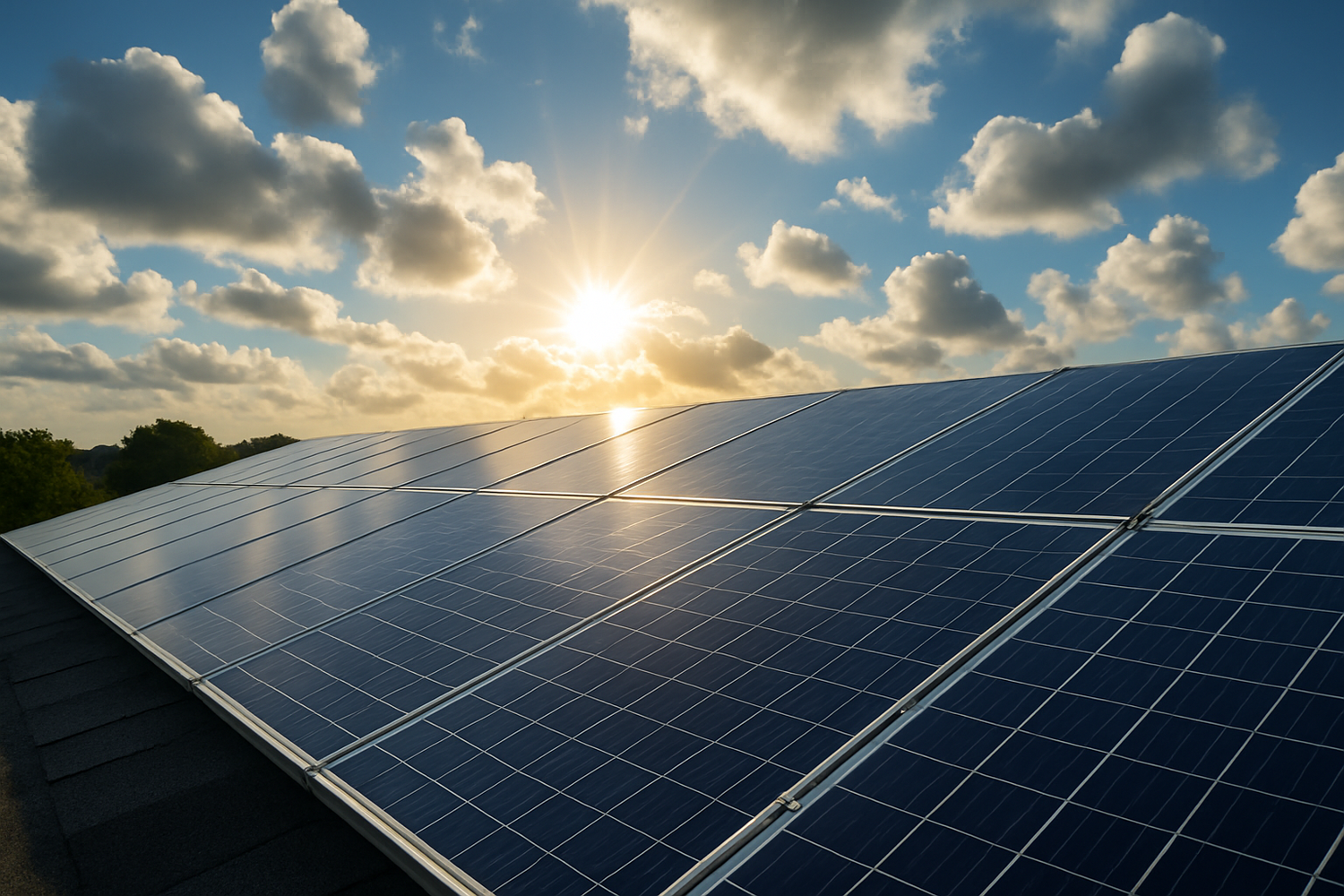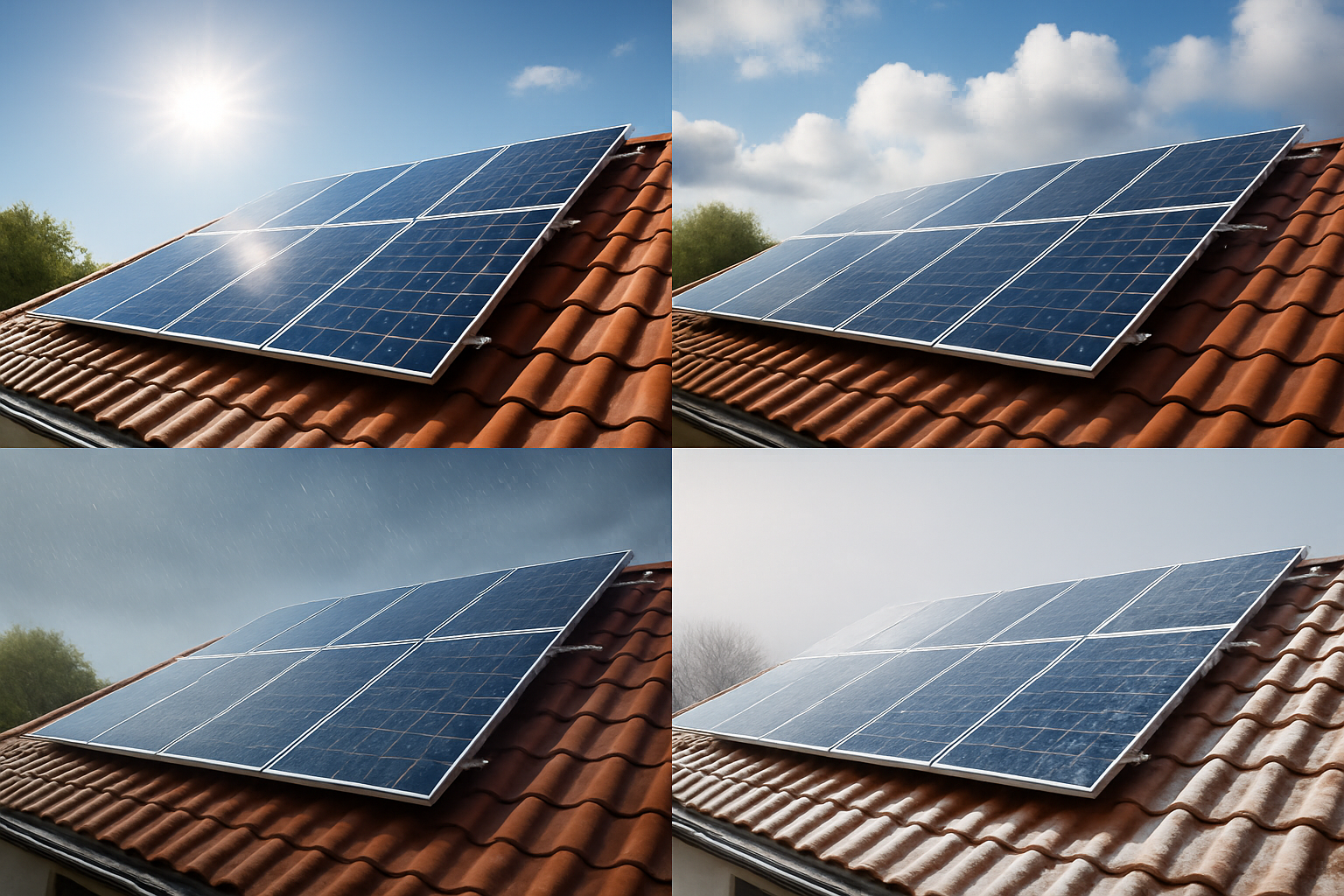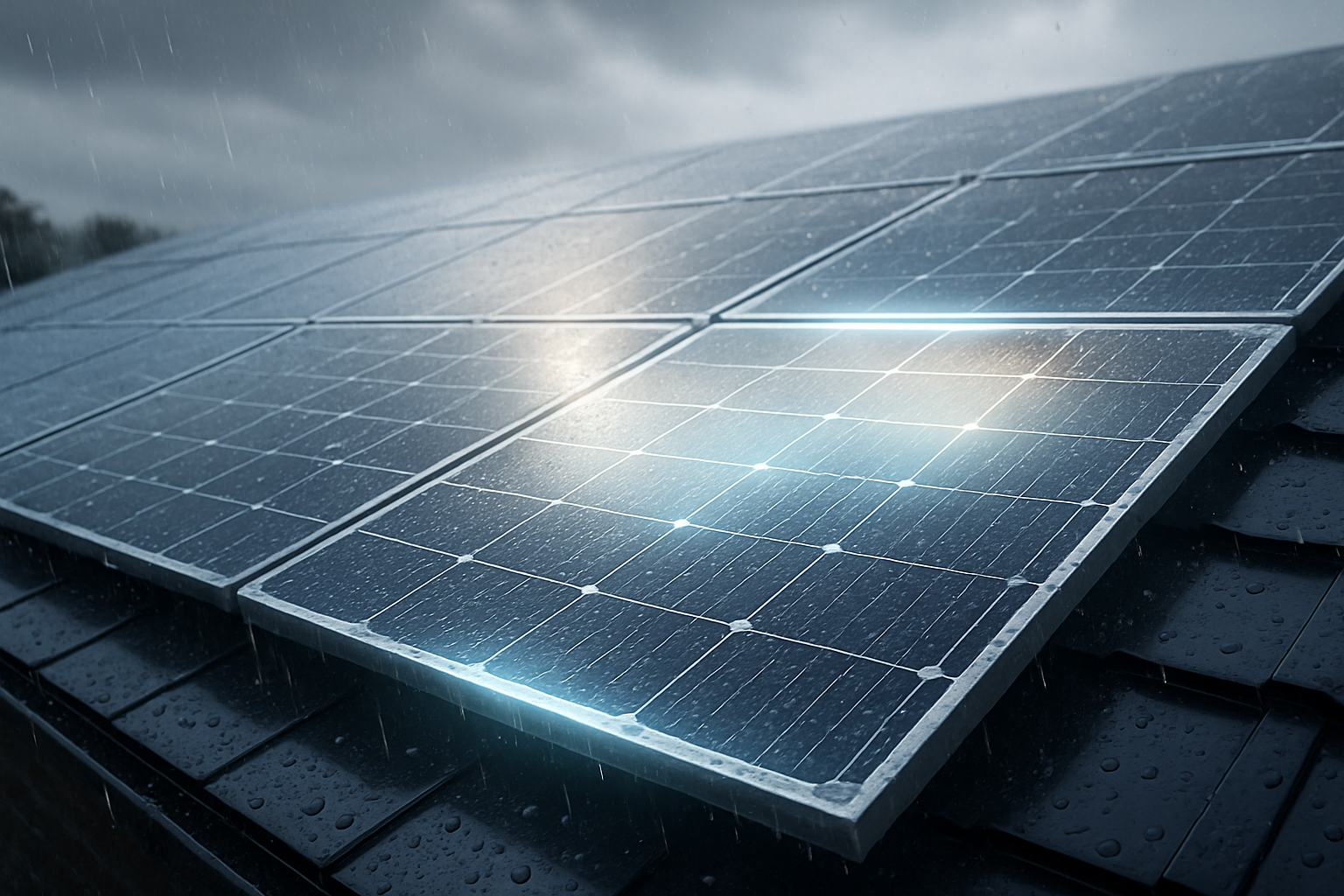Solar systems don’t just work in perfect sunshine—real conditions vary wildly. Understanding how temperature, clouds, and seasons affect panels, inverters, and LiFePO₄ storage is essential for designing systems that stay resilient year-round.
Solar Panels and Temperature
Crystalline silicon panels lose about 0.3–0.5 % of efficiency per °C above 25 °C. So, if panel temps climb to 60 °C, you can expect a 10–15 % productivity drop. [oai_citation:7‡solar.com](https://www.solar.com/learn/does-solar-panel-temperature-coefficient-matter/?utm_source=chatgpt.com) [oai_citation:8‡8MSolar](https://8msolar.com/solar-panel-efficiency-vs-temperature/?utm_source=chatgpt.com)
Colder temps can boost efficiency; cold, sunny conditions often outperform ratings. But snow and ice still block light—though they may slide off or reflect light (the “albedo effect”).

Cloud Cover
Even under clouds, panels generate via diffuse light—though output can dip 10–25% in light cover, and more in storms. Interestingly, the “edge effect” of scattered light can occasionally spike production briefly.
Precipitation
- Rain cleans panels naturally, improving long-term output.
- Snow can block panels—but tilt and surface heat usually clears it. Snow’s reflectiveness can momentarily boost performance.
- Hail is generally no issue—panels are built with hardy tempered glass.
Inverters and MPPT in Real Conditions
Modern hybrid inverters use MPPT (Maximum Power Point Tracking), dynamically adjusting to maximize power under changing light, shade, or temperature—boosting harvest by nearly 30% compared to fixed systems.
They’re also designed for durability: housed against elements, with cooling to stay reliable even when your roof’s sizzling.
LiFePO₄ Batteries: Temperature Sensitivity
LiFePO₄ batteries operate between -20 °C and 60 °C, but work best in the 0–45 °C range. [oai_citation:9‡Eco Tree Lithium](https://ecotreelithium.co.uk/news/lithium-iron-phosphate-battery-operating-temperature-range/?utm_source=chatgpt.com)
Charging below 0 °C is dangerous—it risks lithium plating (permanent damage) and internal resistance spikes. Most BMS systems won’t allow it. The ideal charging window: +5 °C to +45 °C. [oai_citation:10‡维克特能源社区档案](https://communityarchive.victronenergy.com/questions/207794/slow-charging-lifepo4-when-freezing-weather.html?utm_source=chatgpt.com) [oai_citation:11‡Sunon Battery](https://sunonbattery.com/guides-lfp-lifepo4-battery/?utm_source=chatgpt.com)
| Component | Weather Factor | Effect | Optimal Conditions |
|---|---|---|---|
| Solar Panel | High temperature | -0.3 to -0.5%/°C efficiency drop | Cool, sunny conditions |
| LiFePO₄ Battery | High (>45 °C) | Accelerated aging, capacity loss | 0–45 °C discharge; 5–45 °C charge |
| LiFePO₄ Battery | Below 0 °C | Reduced capacity; charging may damage | Avoid charging; wait for temps to rise |
Design & Maintenance Tips for All Seasons
- Ensure panel spacing and airflow to reduce overheating.
- Account for snowy days by slightly oversizing arrays in colder climates.
- Use BMS or enclosure heating to prevent low-temperature charging damage.
- Monitor temps via app and log performance through heatwaves or cold snaps.
Building Weather-Ready Systems
By understanding real-world behaviors—like temperature effects, MPPT’s role, and LiFePO₄’s sensitivities—you can design systems that stay robust in summer heat or winter chill. Thoughtful choices matter: tilt, ventilation, storage strategy, and thermal controls turn weather into just another routine.
References
- Solar.com: “Solar panel temperature coefficient ~–0.3% to –0.5% per °C”
- 8mSolar (2025): “Drop of 10–15% output by 60 °C from 25 °C baseline” [oai_citation:13‡8MSolar]
- Ecotreelithium (2023): LiFePO₄ optimal 0–45 °C range [oai_citation:14‡Eco Tree Lithium]
- Victron community: Charging Li-ion below 0 °C risks Li plating





Leave a comment
All comments are moderated before being published.
This site is protected by hCaptcha and the hCaptcha Privacy Policy and Terms of Service apply.